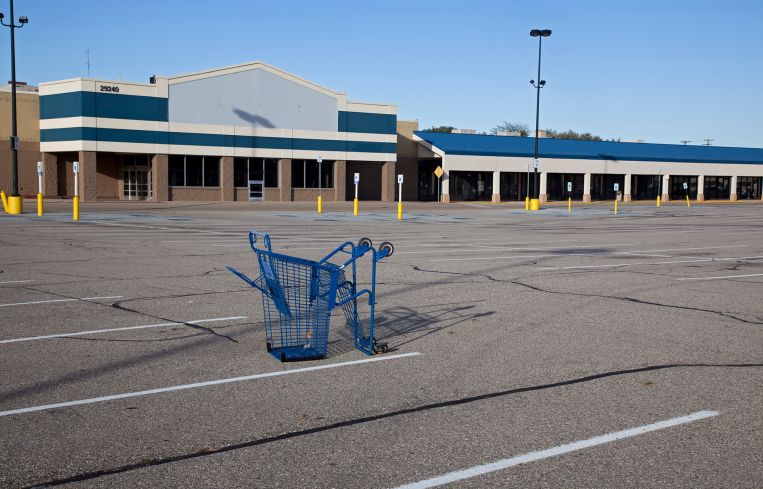Retail Vacancy Spikes Across U.S. as Stores Face Impact From Tariffs
By Isabelle Durso May 12, 2025 4:04 pm
reprints
The U.S. retail market might have looked solid going into 2025, but retailers across the country are taking a big hit as President Donald Trump’s tariffs take shape.
Demand for retail space in the country dropped 5.9 million square feet during the first quarter of 2025, representing the weakest quarter since the onset of the COVID-19 pandemic five years ago, according to a recent report from Cushman & Wakefield.
And, while the U.S. and China agreed Monday to pause their highest tariff levels for 90 days, the effects of Trump’s “Liberation Day” levies — which implemented a 10 percent baseline tax on imports from all countries and steeper taxes on certain nations, including China — have still caused “cautious leasing behavior” among retailers, leading to higher vacancy and easing rent growth, C&W said.
“While it’s too soon to fully understand the impact of tariffs on retail leasing, we have seen certain brands pausing on long-term commitments until they have greater clarity,” Michael J. O’Neill, vice chairman at C&W, said in a statement sent to Commercial Observer.
“These retailers, many of which are in the early stages of their growth cycle, have been taking a ‘wait-and-see’ approach to committing to long-term leases,” O’Neill added.
The tariffs will impact retail in three main ways, according to C&W: Retailers will have to pay higher costs for imported goods and materials, reducing profit margins; consumers will face higher costs, impacting how much they spend; and uncertainty will grow around operational planning, reducing strategic investments.
Retailers in the appliances and sporting goods category — which largely source imports from China — may be most affected as higher costs and economic uncertainty impact leasing decisions in the next few months, according to C&W.
“We’ve seen brands that have already made commitments attempting to delay construction prior to store opening in an effort to preserve capital in the near term,” O’Neill said.
In fact, “consumer sentiment” already dropped to the lowest level in April since 2021 as tariffs “compounded anxiety about the employment and income picture,” the report said. Meanwhile, “heightened volatility” in the stock market “fueled concern for older and wealthy consumers,” it said.
And, while C&W said a recession is unlikely, the national retail vacancy rate rose to 5.5 percent during the first quarter of 2025, a 20 basis point increase from the same time last year, according to the report.
Neighborhood shopping centers accounted for 75 percent of the “pullback in demand,” with 48 of the 81 markets tracked by C&W showing declines, the report found. Still, the Raleigh-Durham, N.C., St. Louis, Charleston, S.C., Seattle and Norfolk, Va., markets saw increased demand in the first quarter.
The impacts from the tariffs also come after an already tumultuous year for retail bankruptcies in the U.S., with major chains such as Big Lots, Rite Aid and LL Flooring shutting down stores across the country.
More retail bankruptcies might be on the way as a result of the new trade policies, with store closures already on track to outnumber store openings this year by a larger margin than in 2024, C&W said. Last year, retailers closed about 1,300 more stores than they opened, the Wall Street Journal reported.
As for how retail vacancies will fare going forward, C&W predicted vacancy rates will rise nationally to between 6 and 6.5 percent by early 2026, but stabilize soon after due to expected “stronger economic growth.”
Isabelle Durso can be reached at idurso@commercialobserver.com.


